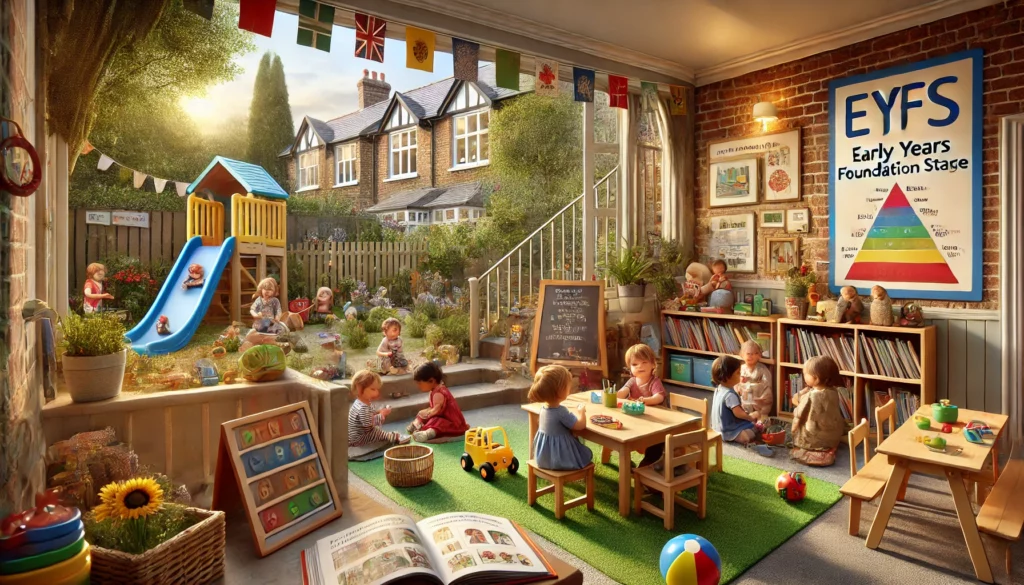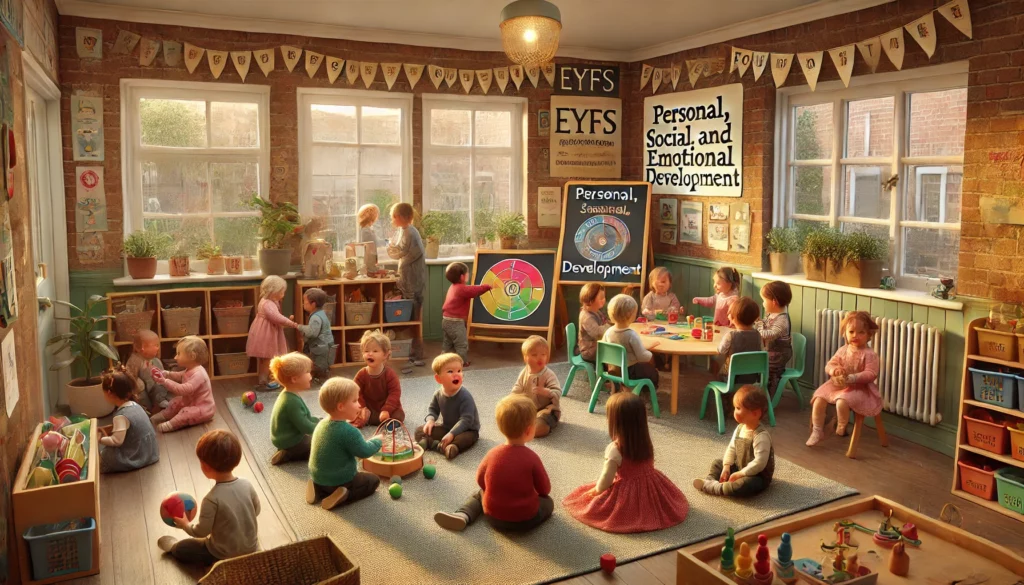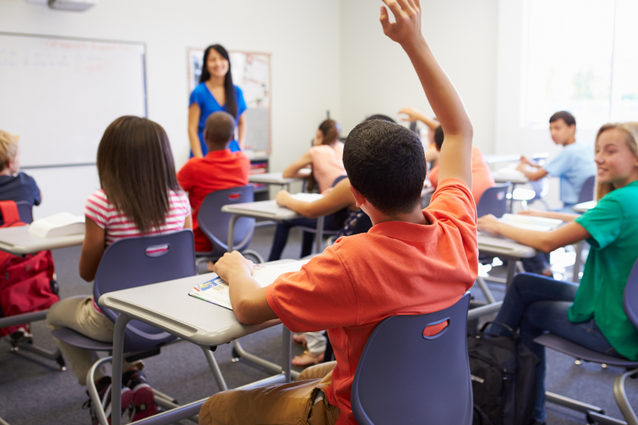
Table of Contents you will find with us
- Table of Contents you will find with us
- Early Years Foundation Stage
- Key Components of the EYFS Curriculum
- Role of Early Years Practitioners
- Early Learning Goals – EYFS Curriculum
- Activities to Promote Emotional Resilence
- Updates in the 2024 EYFS Framework
- Frequently Asked Questions on the EYFSP – EYFS Curriculum
- Top 7 best schools for EYFS Curriculum
- Benefits of the EYFS Curriculum
- How to Support Your Child's Learning at Home
- Updates to the EYFS Curriculum Policies 2024
- How to Write an EYFS Curriculum Policy
- What to Include in Your Early Years Curriculum Policy
- 7 Steps How to Write an Outstanding EYFS Curriculum for Your Nursery
Early Years Foundation Stage
Every parent needs to understand what Early Learning Goals are to give their child a better future. Early Learning Goals play a key role in guiding early years development in children. The EYFS curriculum works on what children will learn in your nursery. Specifically, it covers seven areas of learning as required by the EYFS statutory framework:
- Personal, Social and Emotional Development (PSED)
- Communication and Language (CL)
- Physical Development (PD)
- Literacy
- Mathematics
- Understanding the World
- Expressive Arts and Design
The Prime and Specific Areas
The first three areas (PSED, CL, and PD) are the Prime Areas, which are necessary for developing children’s curiosity and enthusiasm for learning. Meanwhile, the other four areas (Literacy, Mathematics, UW, and EAD) are the Specific Areas, which include skills and knowledge needed for societal participation.
Key Components of the EYFS Curriculum
- Learning through Play: Play is crucial for development. The EYFS ensures children learn best through play, providing opportunities to explore and discover in a safe environment.
- Assessment and Progress: Teachers assess children’s development and inform parents and future teachers about their strengths and areas for growth.
- Partnership with Parents: The EYFS values strong partnerships with parents, involving them in their child’s learning journey.
- Individualised Learning: Every child is unique. The EYFS supports personalised learning experiences to meet each child’s needs.

Role of Early Years Practitioners
Early Years Practitioners play an important role in delivering the EYFS curriculum. Firstly, they create a healthy environment where children can explore and learn through play. Additionally, these professionals assess each child’s development, plan activities that are most likely to be similar to their interests, and support their emotional and social growth. By building strong relationships with both children and parents, practitioners ensure that every child feels valued and supported. Consequently, it is highly recommended for children to go through this necessary process for developing important skills for a bright future.
Early Learning Goals – EYFS Curriculum
Early learning goals are targets for children to reach by the end of EYFS. Firstly, it is very important for our children to begin nurturing their minds from an early age. Specifically, these targets include communication, physical development, and personal, social, and emotional growth. By focusing on these goals, teachers can ensure that children are prepared for the next step in their education. Additionally, every parent needs to understand that it is our responsibility as teachers to help them today for a better future.
Activities to Promote Emotional Resilence
- Mindfulness Exercises: Easy breathing exercises, yoga, and telling mindful stories can help children stay calm and focused.
- Role-Playing: Acting out different situations helps children practice handling various emotions and social interactions. Additionally, this method allows children to explore and understand different social scenarios in a safe environment.
- Emotion Charts:
- Using charts or pictures can help children recognise and talk about their feelings. Additionally, these visual aids make it easier for children to understand and express their emotions.
- Storytelling: Reading books about emotions and discussing what the characters feel and do can help children understand their own emotions.
Updates in the 2024 EYFS Framework
The key updates to the EYFS framework 2024 include:
- Staff-to-Child Ratios: The minimum ratio for two-year-olds changed from 1-4 to 1-5. Additionally, providers can choose a lower ratio if it better meets the children’s needs.
- Supervision During Meals: New rules require adults to be within sight and hearing during meal times.
- Childminder Flexibility: Childminders can care for more than three young children under certain conditions, like caring for their own child or siblings.
Separate Frameworks:
- Two distinct versions of the EYFS framework have been created: one for childminders and another for group and school-based providers.
- Tailored guidance relevant to each type of setting.
Safeguarding Policies:
- Expanded to include all electronic devices with imaging and sharing capabilities, such as tablets and smartwatches, in addition to mobile phones and cameras.
- Ensures safe and appropriate use of digital technology within early years settings.
Support for Children with EAL:
- As a result, there is now more flexibility in supporting children who speak English as an additional language.
- Specifically, the requirement has been changed from “must” to “may” take reasonable steps to provide opportunities for these children to use their home language in play and learning.
Additionally, this adjustment allows for greater flexibility in how providers support the language development of children.
Qualification Requirements and Ratios:
- The requirement for Level 3 practitioners to have a Level 2 maths qualification for staff-child ratios has been removed. Additionally, this change aims to simplify the qualifications needed for early years staff.
- Consequently, setting managers are responsible for ensuring their staff have the necessary maths skills to deliver the curriculum effectively.
- Additionally, new managers from January 2024 must achieve a Level 2 maths qualification within two years if they do not already have one.
- Furthermore, students on long-term placements and apprentices can be included in staff-child ratios at a level below their study level if deemed competent and responsible by their managers.
Child Protection Clarifications:
- Physical evidence is not required for assessments of children’s development.
- Instead, practitioners should rely on their professional judgement and knowledge of the child.
- Consequently, these updates aim to make early years education more effective and less burdensome for providers, focusing on practical changes that enhance the quality of education and care for young children.
Frequently Asked Questions on the EYFSP – EYFS Curriculum
Do I have to complete the EYFSP for a child with SEND?
Yes, you must complete the EYFSP for all children, including those with SEND, unless exempt. To enhance the assessment process, make adjustments to help children show their development. Additionally, you might need specialist help. Therefore, assess all areas of development to plan future activities and support their move to Year 1. For more advice, see section 3.5 of the EYFSP handbook.
Do I have to complete the EYFSP for a child who has not spent much time in the setting?
Yes, complete the EYFSP for all children, even if they haven’t been in the setting long. Additionally, if you see no evidence that a child has met an early learning goal, report them as “emerging”. Furthermore, explain this to the Year 1 teacher to support the child’s transition.
What exemptions are available from the EYFSP?
Exemptions can be granted for:
- Registered independent schools meeting certain conditions
- Settings with principles conflicting with the EYFS
If a family’s beliefs conflict with the EYFS, they can request modifications or exemptions for their child. Additionally, see the guidance on exemptions for details.
Should I complete the EYFSP and submit code ‘A’ for children staying in EYFS beyond age 5?
No. Continue assessing the child throughout their time in EYFS. Complete the EYFSP at the end of the reception year before they move to Year 1. Discuss deferring the assessment with the local authority to ensure the child’s data is not missing when you submit EYFSP outcomes.
How do you complete the profile for children attending more than one setting or who move settings?
Complete the profile for all children registered at your school or provider. For children attending more than one setting, the main setting should complete the EYFSP. If a child moves during the year, send your assessment to the new setting if the profile is complete. If they move in the second half of the summer term, the previous school should submit the data. and if they move before that, the new school should submit the data.
Top 7 best schools for EYFS Curriculum
1.Newham Sixth Form College
2.Newham College London
3.St Michael’s Catholic College
4.Hampton Court House
5.Grange Primary School
6.St. Stephen’s School and Children’s Centre
7.London Academy of Excellence Stratford
Benefits of the EYFS Curriculum
- School Readiness: The EYFS helps children develop skills needed for starting school. Specifically, it covers literacy, numeracy, social skills, and emotional resilience.
- Holistic Development: The curriculum supports physical, emotional, social, and cognitive growth.
- Parental Involvement: Parents are actively encouraged to be part of their child’s learning journey. Consequently, this involvement strengthens the bond between home and school.
- Inclusive Education: The EYFS caters to all children, promoting equality and inclusion.
How to Support Your Child’s Learning at Home
- Encourage Play: Provide opportunities for your child to play, including imaginative play, physical play, and interactive games. In this way, you can support their overall development and learning.
- Read Together: Make reading a daily habit. This helps develop language skills and fosters a love for books.
- Explore Nature: Take your child outdoors. Nature walks, park visits, and gardening can stimulate curiosity and learning.
- Create a Routine: Create a daily routine with time for learning, play, and rest. Consistency helps children feel secure and organised.
Updates to the EYFS Curriculum Policies 2024
Introduction to the 2024 Updates
- The Early Years Foundation Stage (EYFS) framework has been updated in January 2024 to improve early years education in the UK. Consequently, these changes make the framework more practical and easier for different types of early years providers to use.
Separate Frameworks for Different Providers
- One of the main updates is the creation of two separate versions of the EYFS framework. There is now one version specifically for childminders and another for group and school-based providers. This change allows each type of setting to follow guidelines that are tailored to their unique needs.
Expanded Safeguarding Policies
- Safeguarding policies have also been expanded. Now, all electronic devices that can take and share images, such as tablets and smartwatches, are included in these policies. This update ensures that children are kept safe in a digital age.
Flexible Support for EAL Children
- Support for children who speak English as an additional language has become more flexible. Providers “may” take reasonable steps to help these children use their home language in play and learning, instead of “must.” This gives providers more discretion in how they support each child.
Changes in Staff Qualifications and Ratios
- Changes have been made to staff qualifications and ratios as well. Firstly, the need for Level 3 practitioners to have a Level 2 maths qualification for staff-child ratios has been removed. Additionally, new managers must achieve this qualification within two years if they do not already have it. Additionally, competent students and apprentices can now be included in staff-child ratios under supervision.
Clarifications on Child Protection
- Finally, there are clarifications on child protection. Practitioners are no longer required to collect physical evidence for assessing children’s development. Instead, they should use their professional judgement and knowledge of the child.
Conclusion
- These updates aim to simplify the rules and, consequently, help providers offer high-quality care and education more effectively. By staying informed about these changes and adapting their practices, early years settings can, therefore, continue to provide excellent support and education for young children.
How to Write an EYFS Curriculum Policy
An EYFS curriculum policy can attract prospective parents. Here are some tips:
- Be Brief: Explain what parents need to know, your aims for their child’s learning, and how you plan to achieve them.
- Tailor it to Your Setting: Adapt your curriculum to meet specific needs, like low speech and language levels or unique outdoor facilities.
- Be Ofsted Mindful: Ensure your policy covers the Ofsted 3 I’s: Intent, Implementation, and Impact.
- Be Accessible: Use simple language to explain terms and avoid jargon.
What to Include in Your Early Years Curriculum Policy
Organise your curriculum policy by the 3 I’s for coherence:
- Curriculum Intent: Showcase your aims for what children will learn. Use visual aids to present your curriculum clearly.
- Curriculum Design: Explain the theories behind your chosen curriculum design. Additionally, show parents the teaching style their child will experience.
- Curriculum Implementation:
- Describe daily practices and how your curriculum is delivered. Additionally, include your EYFS charter, mission statement, and effective characteristics of learning. Furthermore, highlight the role of adults and parental involvement.
7 Steps How to Write an Outstanding EYFS Curriculum for Your Nursery
- Assess Children: Explain how and why you assess children. Additionally, use observations and evidence recording for assessments.
- Be Inclusive: Inclusive practice should be at the core of all activities. Therefore, adapt tasks to meet the needs of all children.
- Develop Cultural Capital: Provide opportunities for children to experience the world around them, thereby closing the experience gap.
- Vary Social Demand and Interaction: Help children build communication and language skills by varying social demands; thus, enhancing their ability to adapt to different social situations.
- Promote a Love for Reading: Make storytime a daily routine. Use creative methods to engage children in reading.
- Develop Emotional Resilience: Introduce conflict resolution strategies and empathy. Praise effort to build resilience.
- Parental Involvement: Engage parents in their child’s learning journey by using digital tools to share insights and activities.
To Sum Up
The 2024 updates in curriculum makes it more practical and more effective for children. Now when there are seperated groupds of childminders and group-based providers, guidline is more relevant to each setting. since 2024 policies include all devicecs with cameras, ensuring childrens safety in a digital world now are on high standarts in UK.
When teachers and parents use the EYFS curriculum well, they can help children become happy, confident, and capable.
The EYFS curriculum helps children grow in all areas. Firstly, it focuses on learning through play, giving personalised attention, and working closely with parents. Consequently, this approach ensures that every child gets a great start in life.
overal this updates help teachers offer parents and children high quality education, improvment and care more easily.
For more information, visit Edumentors.
At last With the EYFS curriculum, we help our children achieve a better future, enhance their communication skills, and create a better environment for them to live in, ultimately contributing to a better world.








